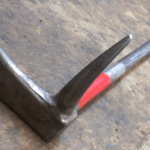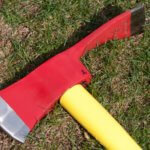By Kathy Clay
We carry tools with us fighting wildland fire. Pulaskis, chain saws, shelters, gloves, sunglasses, sunscreen. A tool you may not consider, and one often overlooked, is the tool of listening.
The National Fallen Firefighter Foundation (NFFF) took the tool of listening across the country in six cities over the course of four months – from October 2017 to February 2018 – to hear and learn how to reduce wildland fire line-of-duty deaths and injuries.
Well entrenched in the structural firefighting arena, NFFF’s Everyone Goes Home message is timely as wildland fire burns into neighborhoods across the nation – east to west. Firefighting in the wildland urban interface is often the job of the local fire department– trained in structural firefighting and rarely trained or equipped for the wildland urban interface fire. In 2016, one-third of the firefighters who died in the line of duty on wildland fires were structural firefighters.
As a Battalion Chief and Fire Marshal for Jackson Hole Fire/EMS, I had the privilege of being a part of the NFFF’s listening session held in Boise, Idaho. Energetic conversations ensued with Retired Chief Tom Harbour at the helm of facilitations. And who better? Chief Harbour’s 40 years of wildland firefighter experience anchored us all in respect and admiration. Around our informal circle, voices of care and concern rose from the hearts of representatives from the US Forest Service, Bureau of Land Management, National Volunteer Fire Council, aviation leaders, Ranch Fire Protection Agencies, researchers, and boots-on-the-ground firefighters. Passionate pleas to stop the dying of wildland firefighters welled up from glossy seasoned eyes that have seen much over the course of many years.
The wildland fire world is not familiar with NFFF’s 16 Firefighter Life Safety Initiatives (Foundation, 2018) and this one message resonated in all six regional listening sessions. Developed in 2004 at a Firefighter Safety Summit in Tampa, Florida, the Initiatives have promoted a culture of safety in the US fire service and have become the foundation for thousands of fire departments leaning forward to take a passionate role to ensure their responders return home safely.
Everyone Goes Home. The message resonates loudly in the wildland fire world and will become a continued and expanding challenge as firefighters are asked to respond to the complex and hazardous interface where wild meets urban.
Input from the six listening sessions will guide development of wildland-specific safety materials and messages. The collective message gleaned from the six listening sessions were presented in June 2018 at a Washington, D.C. meeting involving national wildland fire leaders.
The National Fallen Firefighter Foundation is committed to firefighter safety – those wearing bunkers and those in Nomex, those carrying halligans ( https://www.fireengineering.com/articles/2017/10/the-halligan-part-1.html ) and those carrying pulaskis or drip torches.


This effort to listen and hear with the desire to make change gives all of us in the fire service an opportunity to embrace a culture of safety and be sure Everyone Goes Home.
These are the 16 Initiatives that NFFF identified as key to firefighter safety, now migrating from structural firefighters to wildland firefighters – basically, to anyone who responds to fires.
- Cultural Change
- Accountability
- Risk Management
- Empowerment
- Training & Certification
- Medical & Physical Fitness
- Research Agenda
- Technology
- Fatality, Near-Miss Investigation
- Grant Support
- Response Policies
- Violent Incident Response
- Psychological Support
- Public Education
- Code Enforcement & Sprinklers
- Apparatus Design & Safety
For more information, visit https://www.everyonegoeshome.com/16-initiatives/ and see the next article by Tom Harbour.
